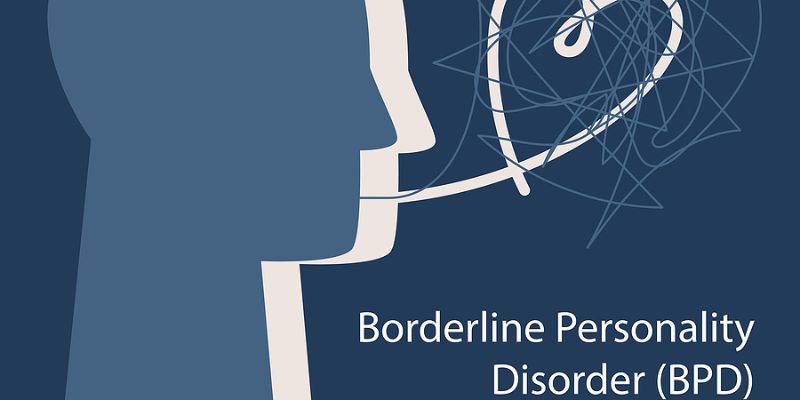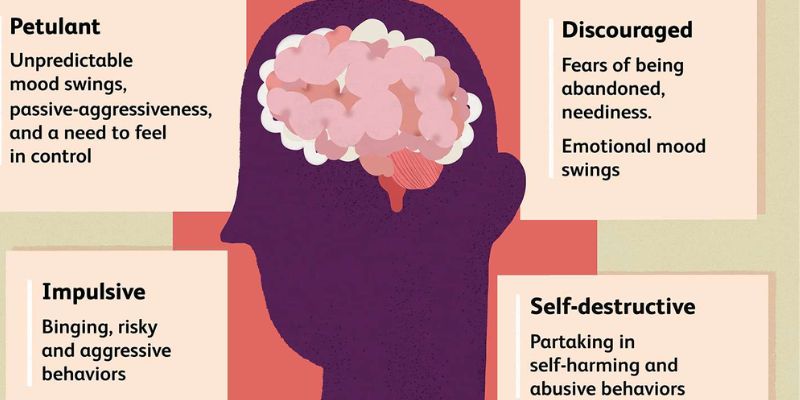Living with Borderline Personality Disorder (BPD) can be a challenging and isolating experience. It’s estimated to affect 1.6% of the adult population in the United States, yet many people are still unfamiliar with how BPD affects individuals or the various types.
In this blog post, we’ll dive into what Types of BPD there are, how they manifest themselves differently from each other, and give tips on recognizing symptoms and where to get help if you or someone close to you suffers from it.
Despite its difficulties, more understanding of BPD is becoming available every day, which helps create community support networks for those who live with it.
Borderline Personality Disorder (BPD)

A mental health condition known as borderline personality disorder (BPD) is characterized by ongoing volatility in mood, self-image, behavior, and interpersonal interactions. People with BPD frequently struggle to control their powers, erratic emotions and display impulsive, self-destructive behaviors.
Possible causes of BPD
- Genetic predisposition or family history of BPD
- Neurobiological factors, such as abnormalities in brain structure or functioning
- Childhood trauma or abuse, including emotional, physical, or sexual abuse
- Invalidating or unstable environments during childhood
- Environmental factors, such as unstable family dynamics or disrupted attachments
- Neurochemical imbalances, including serotonin and dopamine dysregulation
- Personality and temperament traits, such as high sensitivity and impulsivity
- Co-occurring mental health conditions, such as depression, anxiety, or substance use disorders
The Four Types of BPD

1. Borderline Personality Disorder discouraged
Borderline Personality Disorder discouraged, also known as quiet BPD, is one of the four types of Borderline Personality Disorder. Individuals with this subtype of BPD share many of the core characteristics of the disorder, but they tend to express their symptoms differently.
Here is an explanation of the features and symptoms commonly associated with Discouraged BPD:
- Fear of abandonment: Like other individuals with BPD, those with discouraged BPD have an intense fear of abandonment. They may go to great lengths to avoid real or imagined abandonment, and this fear can significantly impact their relationships.
- Hidden emotions: People with BPD who are discouraged conceal their feelings and internalize them. They may struggle to express their emotions outwardly, often blaming themselves rather than others for their difficulties. This internalized approach to emotions can make it challenging for others to recognize their emotional turmoil.
- Perfectionism and high functioning: Individuals with discouraged BPD often exhibit perfectionistic tendencies. They may strive for high achievement and success and function well in various areas of life, such as academics, careers, or personal pursuits. However, this high functionality can be a way to mask their inner struggles.
- Lack of strong bonds: People with discouraged BPD often feel a sense of detachment or alienation in social groups. They may have difficulty forming and maintaining deep, meaningful connections with others, leading to a persistent feeling of lacking strong bonds. This sense of disconnection can contribute to their feelings of loneliness and emptiness.
- Neediness and clinginess: People with discouraged BPD may exhibit signs of neediness and clinginess in their relationships. They may strongly desire validation, approval, and reassurance from others while also experiencing fear of rejection or abandonment. This can lead to difficulty maintaining healthy boundaries and a tendency to rely heavily on others for emotional stability.
- Emotional mood swings: Emotional instability is a core feature of BPD, and individuals with discouraged BPD are no exception. They may experience rapid and intense mood swings, shifting from sadness, anger, or emptiness to moments of relative stability or even happiness.
2. Impulsive Borderline Personality Disorder
Impulsive Borderline Personality Disorder, as the name suggests, is one of the four subtypes of Borderline Personality Disorder (BPD). Individuals with BPD exhibit impulsive and reckless behaviors without considering the consequences or the impact on others.
Here are some characteristics and examples of impulsive behaviors associated with this subtype:
Characteristics:
- Energetic: People with impulsive BPD may display high levels of energy and enthusiasm. They may engage impulsively, driven by intense emotions and desires.
- Charismatic: Individuals with impulsive BPD often possess charisma and charm that can appeal to others. They may be outgoing, engaging, and captivating in social situations.
- Detached or elusive: Despite their outward charm, people with impulsive BPD may also exhibit a sense of detachment or elusiveness. Due to their impulsive behaviors, they might struggle with maintaining long-lasting and stable relationships.
- Motivating or engaging: Individuals with impulsive BPD can be highly motivating and engaging, especially when pursuing something that captures their interest. They may inspire others or draw people into their impulsive endeavors.
- Flirtatious: People with impulsive BPD may display flirtatious behavior, seeking attention and validation from others. They may be drawn to intense and passionate relationships but struggle with maintaining them due to their impulsive actions.
Examples of impulsive behaviors:
- Aggressive behaviors: Individuals with impulsive BPD may exhibit aggressive behaviors such as physical fights, outbursts of anger, hitting objects, breaking things, or having yelling fits. These behaviors often stem from intense emotional dysregulation and difficulty in managing anger.
- Bingeing behaviors: Impulsive BPD may manifest in bingeing behaviors, including overspending money on impulsive purchases, binge-eating episodes, or binge-watching TV shows or movies for extended periods.
- Self-destructive and risky behaviors: People with impulsive BPD may engage in self-destructive and risky behaviors without considering the potential consequences. These can include driving under the influence of substances, having unprotected sex with multiple partners, engaging in excessive gambling, using illicit drugs, or consuming alcohol excessively.
3. Petulant Borderline Personality Disorder
Petulant Borderline Personality Disorder is one of the four proposed subtypes of Borderline Personality Disorder (BPD). Individuals with this subtype often exhibit a distinct pattern of behavior characterized by intense and fluctuating emotions, a strong desire for control, and challenges in their relationships.
People with petulant BPD may experience the following:
- Frequent shifts in their emotional states
- Oscillating between anger, sadness, and sulkiness.
These mood swings can be unpredictable and may lead to difficulty managing their emotions effectively. They may also harbor feelings of being unloved or unworthy, which can contribute to their desire for control in various aspects of their lives.
A key feature of petulant BPD is the tendency to engage in manipulative behaviors. They may use manipulation to gain control over their relationships or elicit a desired response from others. This manipulative behavior can strain their relationships and make maintaining healthy connections with others challenging.
Additionally, individuals with petulant BPD may struggle with dissatisfaction in their relationships, often feeling unsatisfied or unfulfilled. This dissatisfaction can increase the risk of engaging in substance abuse or other dangerous behaviors to cope with their emotional distress.
4. Self-Destructive Borderline Personality Disorder
Self-Destructive Borderline Personality Disorder is one of the four types of BPD. Individuals with this subtype battle with intense self-hatred and bitterness. They exhibit various behavioral traits, including self-harm behaviors such as cutting, burning, hitting, and scratching.
Substance abuse, involving both prescription medications and recreational drugs, is also common. Engaging in risky adrenaline-seeking activities without adequate preparation is another characteristic.
Moreover, threats of suicide may be present. While symptoms of self-destructive BPD overlap with other BPD subtypes, certain distinguishing features include a decreased desire to sleep, increased energy, and feelings of euphoria.
Treatments for BPD
Treatments for BPD typically involve a combination of psychotherapy, medication, and support. Dialectical Behavior Therapy (DBT) is a widely used therapy focusing on emotion regulation, interpersonal skills, and distress tolerance.
Medications may be prescribed to manage specific symptoms or co-occurring conditions. Supportive relationships and self-care are also essential.
FAQs
What is the most severe form of BPD?
The most severe form of BPD is Self-Destructive BPD, which can involve self-harm behaviors, substance abuse, suicidal thoughts, and risky activities.
What are the four types of Borderline Personality Disorder?
The four subtypes of BPD include Borderline Personality Disorder discouraged, Impulsive Borderline Personality Disorder, Petulant Borderline Personality Disorder, and Self-Destructive Borderline Personality Disorder.
Where can I go to get help if I or someone close to me is struggling with BPD?
Various treatment options are available if you or someone close to you is struggling with BPD. These may include therapy, medication, lifestyle changes, and support groups.
Conclusion
Borderline Personality Disorder (BPD) can manifest itself in multiple ways, and there are four distinct types of BPD. Borderline Personality Disorder discouraged can cause feelings of despair and emptiness, Impulsive Borderline Personality Disorder results in self-destructive or impulsive behavior, Petulant Borderline Personality Disorder leads to childish or oppositional behaviors, and Self-Destructive Borderline Personality Disorder causes people to engage in self-harm or other harmful activities.




